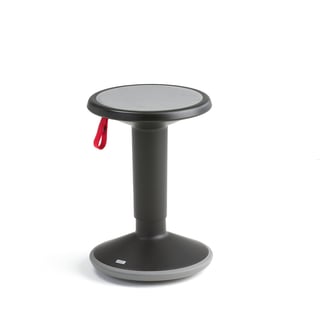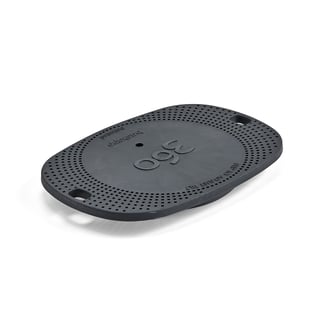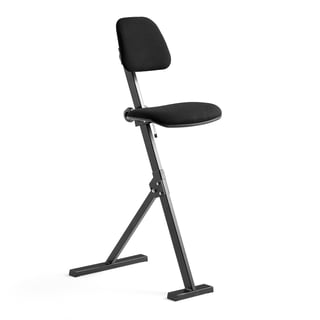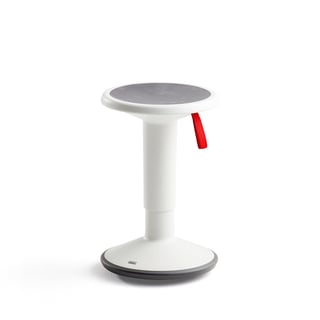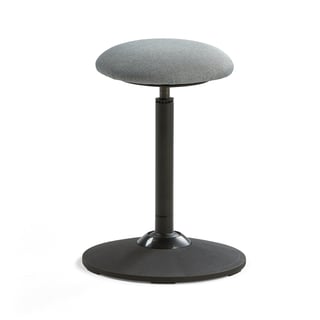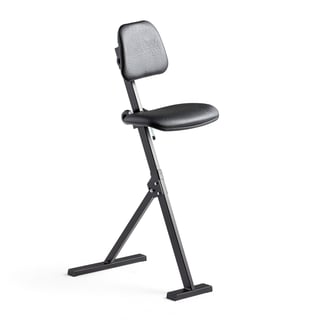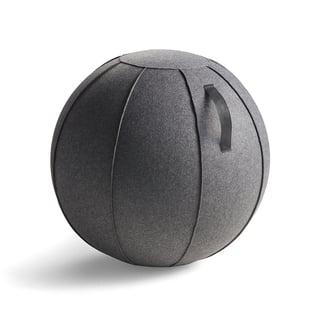
What is ergonomics - really?
Ergonomics means a holistic approach
The concept of ergonomics has long been limited to describing the relationship between people and products. This is still a significant aspect, and there are many functional and ergonomic products that make everyday life better, such as chairs for active sitting. But ergonomics has come to include much more than that. It's about a holistic view of the workplace: planning and adapting both the physical environment and the work itself to the staff. The same applies to those who often work from home.Do you want to sit and exercise at the same time?
Take individual differences into account
An ergonomic workplace is adapted to the people who work there, not the other way around. We thrive when our working conditions meet our individual physical and psychological needs. It is essential to consider individual differences in physical strength and size or the ability to handle information, for example. Based on these differences, you can then design and organise tasks, tools and the entire workplace in a more ergonomic way to prevent any posture or health issues.

Cognitive ergonomics
Cognitive ergonomics, also known as information ergonomics, deals with the interaction between humans and technology. The technology used in the workplace must be adapted to human capabilities to see, hear, understand, remember and make decisions. A computer system that does not fit the brain's way of processing information makes work more difficult and challenging. The workplace not only needs to be adapted for the body but also for the brain.

Safe lifting
Safe lifting looks at how lifting loads at work affects the body. Movement and lifting are good for the human body but problems arise when lifting is performed incorrectly or if the load is too heavy in relation to muscle strength. To avoid strain injuries caused by lifting, it is important to provide sufficient training on lifting techniques and supplement with lifting equipment such as lifting tables and mini stacker trucks.
Repetitive movements, too much sitting, and incorrect working positions can also cause strain injuries, this is known as “static loading”. You may need to make adjustments to the workplace to suit work tasks and those who perform them. Adjustable office chairs, sit-stand desks with ergonomic accessories, and anti-fatigue mats can significantly improve staff health and wellbeing.
Hand-intensive work
The term hand-intensive work means tasks performed with persistent rapid wrist movements combined with force. If such repetitive movements occur during a large part of the workday, it can cause strain-related injuries in the hand, arm and further up to the neck and shoulders. Examples of jobs that may contain hand-intensive work are kitchen professions, cleaning, mail sorting, assembly and nursing or care work.
Sound ergonomics
Noise is considered to be any sound that is not wanted and disturbs the work environment. This can include everything from loud sounds from work machines to the background noise of an office ventilation system. Noise does not need to reach a high sound level to be harmful but there is a risk of hearing damage at around 85 dB.
Noise and poor sound acoustics can also lead to stress-related problems. In professions where worker need to talk a lot (a call centre for example), a poor sound environment can lead to voice problems as they need to raise their voices unnecessarily to be heard. Acoustic panels, desk screens, and sound-absorbing floor screens absorb disruptive noise and contribute to a better work environment. Sound ergonomics is a vital factor to consider when designing a healthy workplace. Read up on how to be sound-smart at work!


Light ergonomics
When lighting during work hours is not optimal, there is a risk of headaches and eye strain. Moreover, it can lead to uncomfortable working positions and tension in the muscles when someone cannot see their work correctly or is exposed to glare from the screen. Review your workplace lighting so that everyone can feel and work better.
Good ergonomics pays off
Replacing the fixed desks in your office with height-adjustable ones or upgrading warehouse equipment to more ergonomic alternatives may seem like a big step. However, research shows that good ergonomics actually improve a companies' profitability. For example, a study conducted by ISSA showed that every dollar spent on improving the work environment gives back a return of at least twice as much. The positive effects are partly due to a reduction in sick leave and partly due to increased wellbeing and job satisfaction, resulting in higher productivity, efficiency, and quality. So when it's time to plan for the future, don't forget to think ergonomically!Source: The return on prevention: Calculating the costs and benefits of investments in occupational safety and health in companies, International Social Security Association (ISSA)
What type of desk is right for you?

Summary
This article explains the concept of ergonomics. In addition to having an understanding of correct working positions and how ergonomic aids provide support, ergonomics at work is about planning and adapting the work environment and work methods according to individual needs. Good ergonomics require a holistic approach that includes safe lifting techniques, sound ergonomics, light ergonomics, cognitive ergonomics, risks of repetitive strain, the importance of regular and varied movement, and more.


